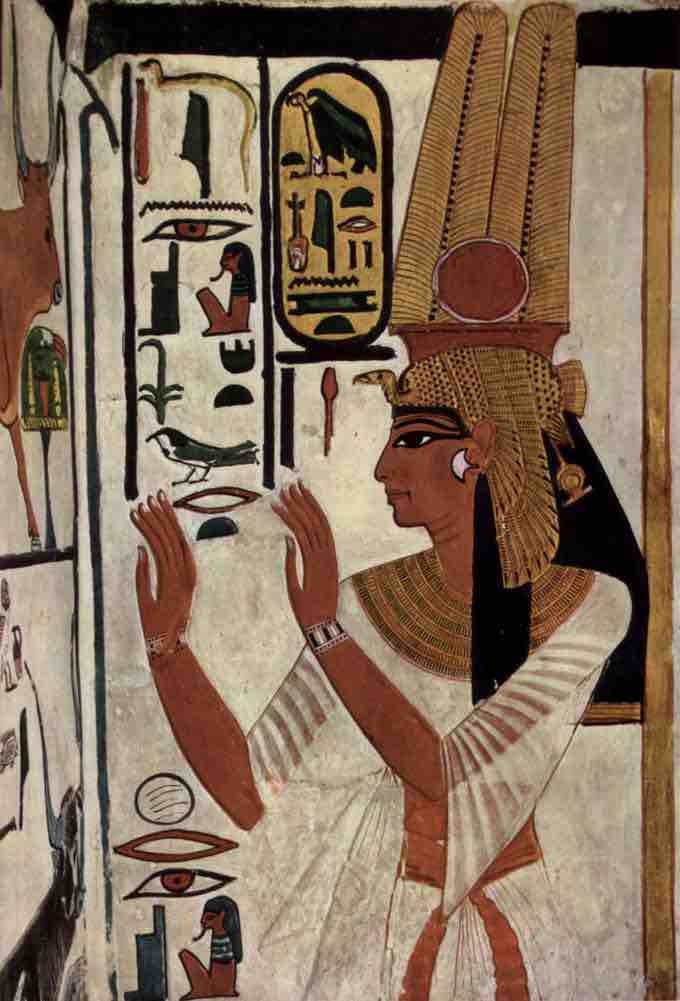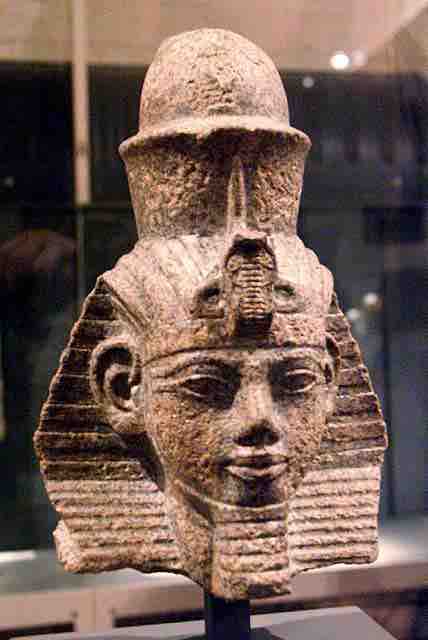Ancient Egyptian art reached a high level in painting and sculpture, and was both highly stylized and symbolic. Much of the surviving art comes from tombs and monuments, and thus there is an emphasis on life after death and the preservation of knowledge of the past.
Painting
All Egyptian reliefs were painted, and less prestigious works in tombs, temples and palaces were just painted on a flat surface. Stone surfaces were prepared by whitewash, or, if rough, a layer of coarse mud plaster, with a smoother gesso layer above; some finer limestones could take paint directly. Pigments were mostly mineral, chosen to withstand strong sunlight without fading. The binding medium used in painting remains unclear: egg tempera and various gums and resins have been suggested. It is clear that true fresco, painted into a thin layer of wet plaster, was not used. Instead the paint was applied to dried plaster, in what is called "fresco a secco" in Italian. After painting, a varnish or resin was usually applied as a protective coating , and many paintings with some exposure to the elements have survived remarkably well, although those on fully exposed walls rarely have. Small objects including wooden statuettes were often painted using similar techniques.
Many ancient Egyptian paintings have survived due to Egypt's extremely dry climate. The paintings were often made with the intent of making a pleasant afterlife for the deceased. The themes included journey through the afterworld or protective deities introducing the deceased to the gods of the underworld (such as Osiris). Some tomb paintings show activities that the deceased were involved in when they were alive and wished to carry on doing for eternity.Egyptian paintings are painted in such a way to show a profile view and a side view of the animal or person - a technique known as composite view . Their main colors were red, blue, black, gold, and green.

Wall painting of Nefertari
Egyptian paintings are painted in such a way to show a profile view and a side view of the animal or person. This painting, for example, shows the head from a profile view and the body from a frontal view. The main colors used were red, blue, black, gold, and green.
Sculpture
The monumental sculpture of Ancient Egypt is world famous, but refined and delicate small works exist in much greater numbers. The Egyptians used the distinctive technique of sunk relief, which is well suited to very bright sunlight. The main figures in reliefs adhere to the same figure convention as in painting, with parted legs (where not seated) and head shown from the side, but the torso from the front, and a standard set of proportions making up the figure, using 18 "fists" to go from the ground to the hair-line on the forehead. This appears as early as the Narmer Palette from Dynasty I, but there as elsewhere the convention is not used for minor figures shown engaged in some activity, such as the captives and corpses. Other conventions make statues of males darker than females. Very conventionalized portrait statues appear from as early as Dynasty II (before 2,780 BCE), and with the exception of the art of the Amarna period of Ahkenaten and some other periods such as Dynasty XII, the idealized features of rulers changed little until after the Greek conquest .

A sculpted head of Amenhotep III
Very conventionalized portrait statues manifest idealized features of rulers.
By Dynasty IV (2680–2565 BCE) at the latest, the idea of the Ka statue was firmly established. These were put in tombs as a resting place for the ka portion of the soul. The so-called reserve heads, or plain hairless heads, are especially naturalistic, though the extent to which there was real portraiture in Ancient Egypt is still debated.
Early tombs also contained small models of the slaves, animals, buildings and objects such as boats necessary for the deceased to continue his lifestyle in the afterworld, and later Ushabti figures. However, the great majority of wooden sculpture has been lost to decay, or probably used as fuel. Small figures of deities, or their animal personifications, are commonly found in popular materials such as pottery. There were also large numbers of small carved objects, from figures of the gods to toys and carved utensils. Alabaster was often used for expensive versions of these, while painted wood was the most common material, normally used for the small models of animals, slaves and possessions that were placed in tombs to provide for the afterlife.
Very strict conventions were followed while crafting statues and specific rules governed appearance of every Egyptian god. For example, the sky god (Horus) was essentially to be represented with a falcon's head, while the god of funeral rites (Anubis) was to be always shown with a jackal's head. Artistic works were ranked according to their compliance with these conventions, and the conventions were followed so strictly that, over three thousand years, the appearance of statues changed very little. These conventions were intended to convey the timeless and non-aging quality of the figure's ka.